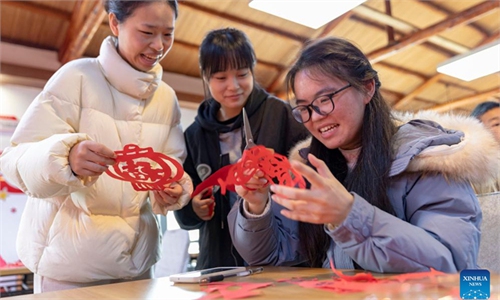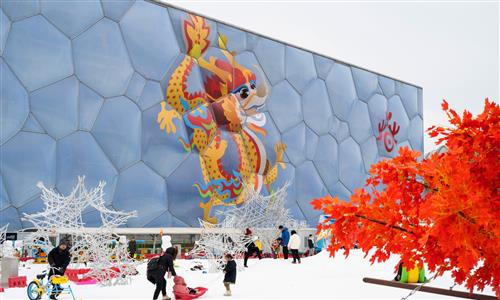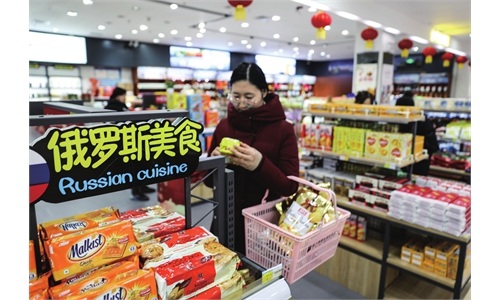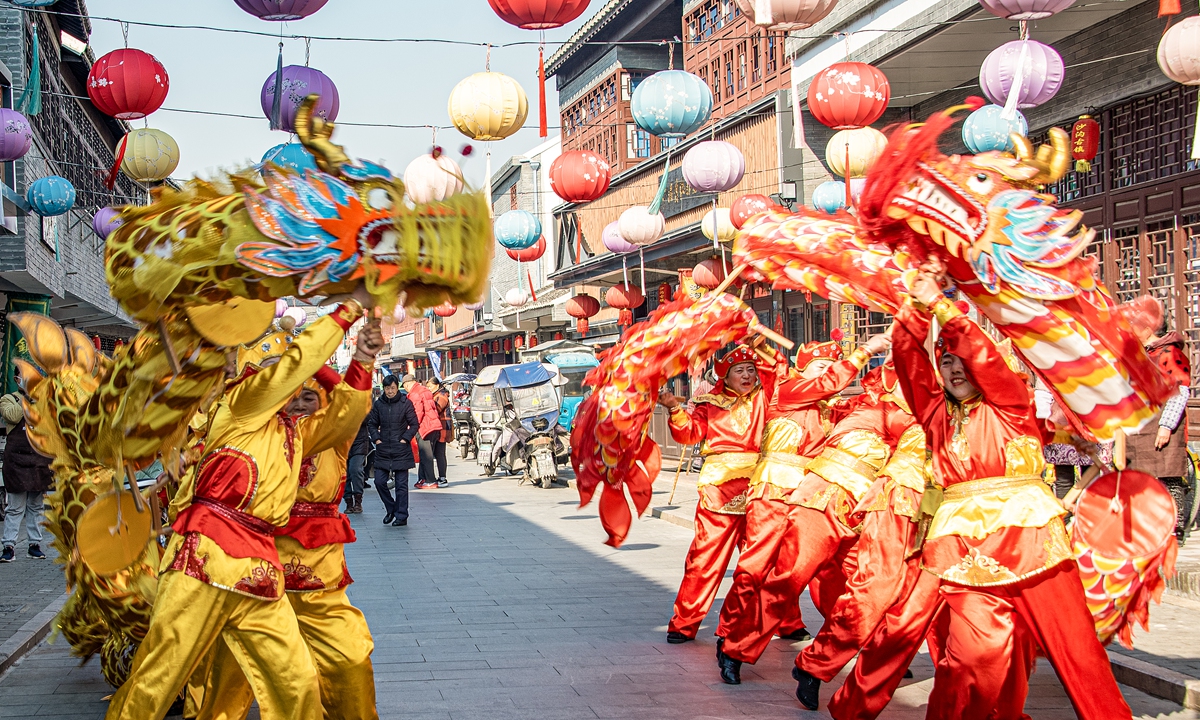
People perform dragon dance for tourists in the Xinghua county, the city of Taizhou, East China's Jiangsu Province, on January 28, 2024. Photo: VCG
It is only about one week before the arrival of the 2024 Chinese New Year, or Spring Festival, which falls on February 10. Chinese people are busy preparing for this important traditional festival as a festive atmosphere has already spread everywhere, from bustling markets, elegantly decorated streets to crowded lantern shows.
In accordance with the lunar Chinese calendar, the year 2024 will be the Year of the Wood Dragon. Dragon is the totem of Chinese nationality that symbolizes power, nobility, and intelligence. Combined with Wood, which holds the meaning of growth, development, and prosperity in Chinese wuxing (five elements) culture, 2024 is forecasted to bring about opportunities, changes, and challenges.
When China is at a vital point in economy recovery, the Year of Wood Dragon inspires great expectation of Chinese people for 2024 and celebration activities have kicked off across the country.
In Shanghai, the annual Yuyuan Garden Lantern Show kicked off on January 21, attracting a large number of visitors. On the evening of January 28 alone, the number of visitors to Yuyuan exceeded 20,000, setting a new record for the show.
Yuyuan Garden is a cultural beacon of Shanghai. It is the largest, oldest and best-preserved traditional Chinese-style garden in this metropolis of east China. It features typical Chinese style pavilions and zigzag bridges above the ponds, and has been serving as a window to display traditional Chinese culture.
The Yuyuan Garden Lantern Show is a representative of Chinese folk culture and a national-level intangible cultural heritage. It has been held for 29 consecutive years.
To celebrate the Year of the Dragon, this year's Yuyuan Garden Lantern Show the fair is themed Mountain and Sea, featuring dragons and mythical creatures from the "Classic of Mountains and Seas."
The show was simultaneously held in four cities in China and France, naming Paris, Shanghai, Shenyang, and Rudong.
In Beijing, a wide range of cultural activities will be held during the Spring Festival holidays, presenting a colorful cultural and tourism feast for residents and tourists, the capital government announced Monday.
Traditional temple fairs in Ditan, Changdian and Shijingshan will be back in full force this year. This year's Changdian temple fair will highlight the traditional Beijing atmosphere with the theme "Strolling along the Central Axis of the ancient capital to appreciate the century-old Changdian."
During the Spring Festival, each district in Beijing will also organize various lantern festivals, flower exhibitions, parades, lantern riddles, and lantern festivals, allowing residents and tourists to immerse themselves in the traditional customs of the northern region.
With its ancient origins, the Spring Festival is the most important festival in China. Over thousands of years, various customs and traditions have been developed to celebrate this festival and many of them are still practiced today in addition to lantern shows and temple fairs.
In ancient agricultural societies, housewives would start preparing Chinese New Year's food around the eighth day of the 12th lunar month. Because the curing process for some complex dishes, such as preserved meats, takes a long time, preparations must be made early. Many provinces and regions in China have the custom of preserving meats, with South China's Guangdong and Southwest China's Sichuan provinces being the most famous.
Couplets and New Year paintings are also unique forms of expression in Chinese culture. Couplets are usually written on red paper and feature auspicious poems expressing blessings and joy. New Year paintings are a kind of folk painting symbolizing good luck and auspiciousness used to decorate rooms. During the Spring Festival, every household, whether in urban or rural areas, selects a pair of red couplets to paste on their door, adding a festive atmosphere to the holidays.
While pasting couplets, some families also paste the Chinese character "福" (fu, meaning good fortune and happiness) on their doors, walls, and lintels, embodying people's longing for a happy life and a better future.
Dragon and lion dances are one of the most representative performances during Chinese New Year celebrations. These performances are usually performed by professional dragon and lion dance troupes in public places such as squares and streets.
Since ancient times, China has been an agricultural country, and favorable weather conditions are of great significance to production and life. In the minds of ancient people, dragons were believed to have the power to summon wind and rain and ward off disasters and epidemics. Therefore, the tradition of holding dragon dances was formed in the hope of obtaining the blessings of dragons.
Global Times
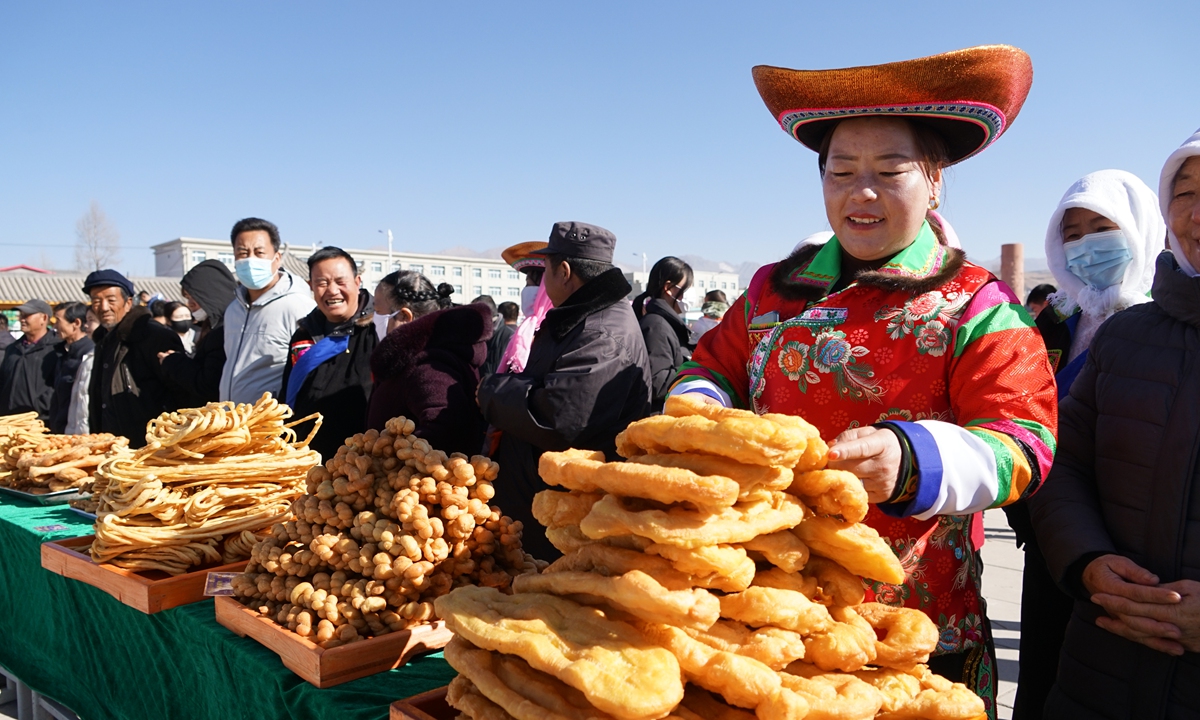
People from the Tu ethnic group display the traditional fried foods they prepare for the Spring Festival at a tradtional food competition in Haidong, Northwest China's Qinghai Province, on January 29, 2024. Photo: VCG
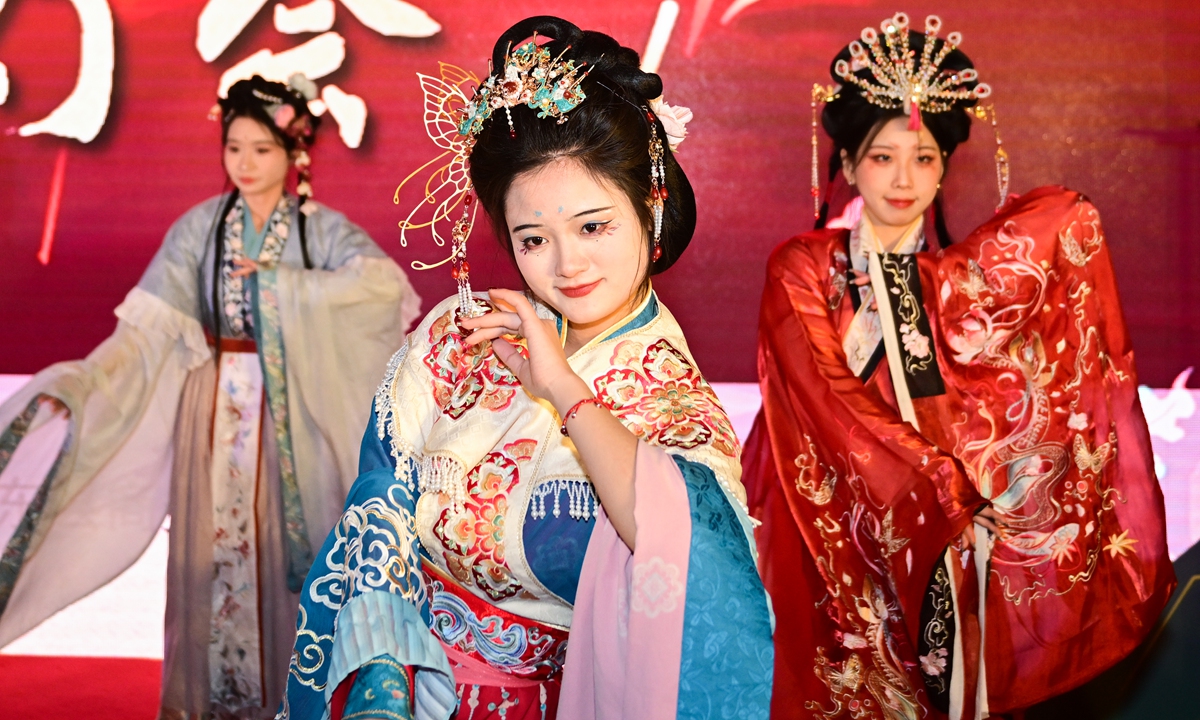
Dancers wear hanfu, the traditional clothing of the Han ethnic group, at the Yuyuan Garden Lantern Show held in Rudong, East China's Jiangsu Province, on January 28, 2024. Photo: VCG
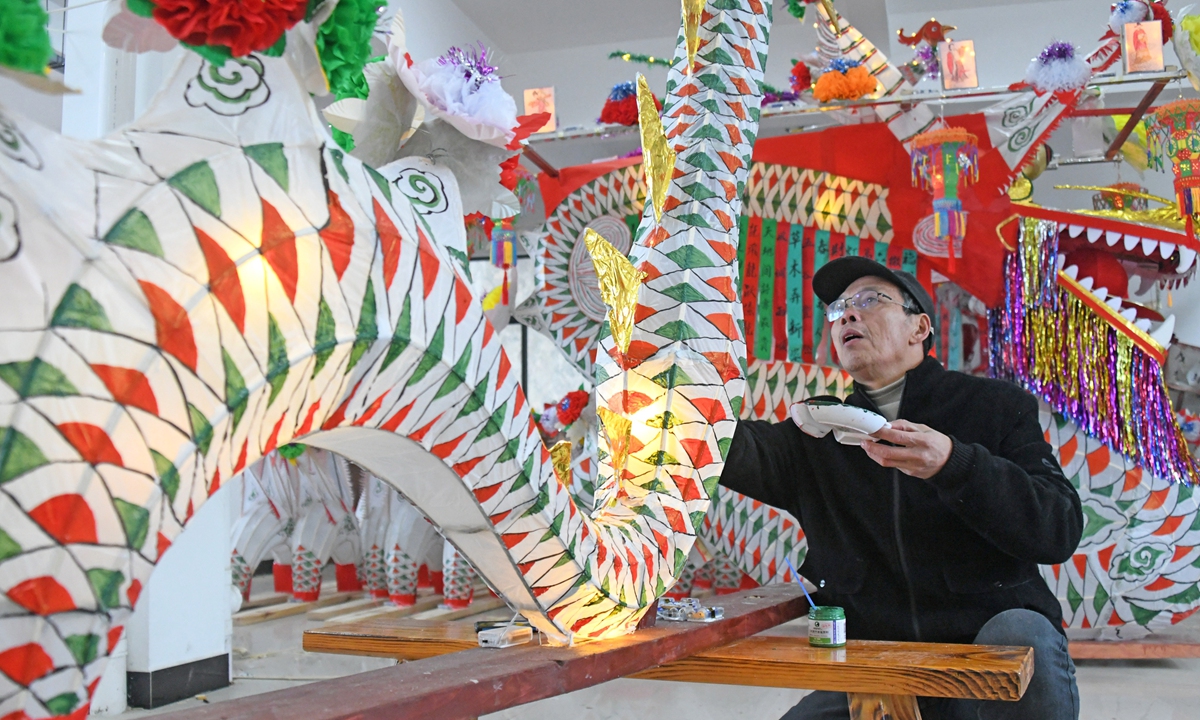
Artist Lü Ruqiang paints a paper dragon in the Anshan village in the Xianju county, East China's Zhejiang, on January 29, 2024. Photo: VCG

Beijing residents purchase New Year goods and prepare for the holiday at a trade market in Fengtai District, on January 28, 2024. Dragon-shaped decorations as well as red lanterns and couplets with the Chinese character fu are mong the most popular goods. Photo: Li Hao/GT
